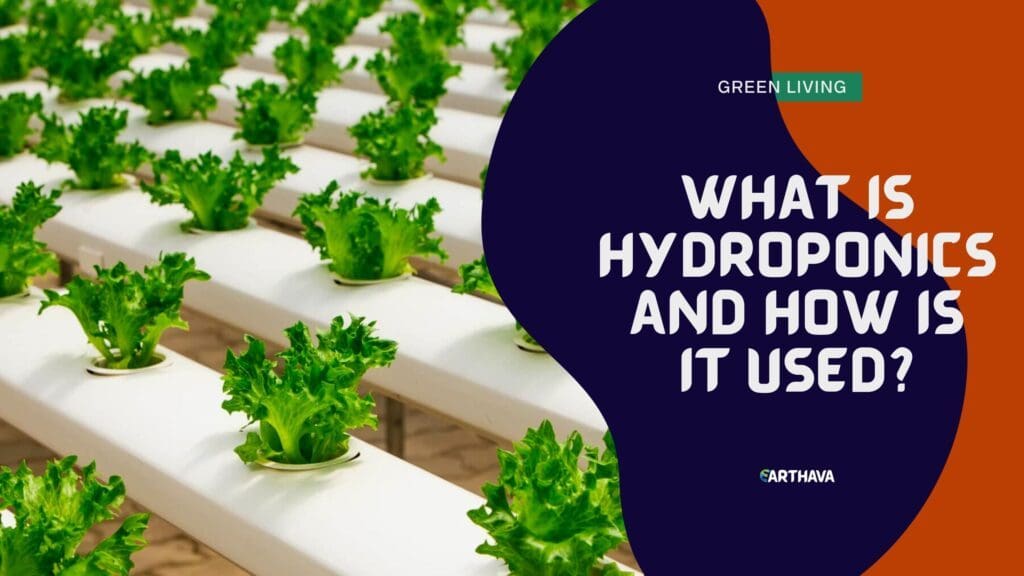Hydroponics is the process of growing plants in a nutrient solution and water, instead of soil. It is a type of vertical farming and hydroculture, which is the process of growing food in an indoor controlled environment. By controlling temperature and moisture, hydroponic production can grow food without sunlight or soil.

Hydroponics is used to grow vegetables and fruit, though farmers are also exploring using it to grow other crops, such as hops. It is most often utilized in commercial settings and in urban areas. Some of the benefits of using hydroponics are higher crop yields, saving water, and more control over the growing environment.
Hydroponics is considered sustainable, but there is still controversy over its potential as an agricultural technology.
How It Works
Hydroponics works by using a nutrient-fortified water source to grow food without soil. Vertical farming is a relatively new technology, allowing farmers to cultivate produce in a greenhouse without soil. Growing systems can vary, but the most popular set-ups include the use of trays, troughs, pipes, and beds.
Fortifying the water supply with nutrients like calcium, nitrogen, and phosphate, hydroponic farmers can supply a constant supply of nutrition to plants. While current technology in hydroculture is relatively new, the idea of hydroponic production has been around for a while.
Hydroponic systems have been used in plastic greenhouses since the 1960s, and a version of hydroculture was even utilized during World War II by the U.S. Army to grow fresh food for troops.
In the last few years, hydroponic technology has seen lots of innovation, especially in urban areas. There are several cases of apartment buildings using vertical farming in greenery facades, which is proving to be a particularly effective use of space.
Benefits of Hydroponics
The benefits of hydroponics include using less land, saving water, and growing crops at a higher density. Because hydroponics uses a controlled environment to grow food, farmers can utilize indoor space in urban areas, growing fresh produce in spaces such as warehouses or other infrastructure.
While hydroponics requires a stable supply of water and electricity, growers have more control over factors that traditional farmers must deal with, such as extreme weather and drought. Hydroponic systems can be set up in a variety of greenhouse styles, making them extremely versatile when it comes to production.
When comparing hydroponics to conventional agriculture, another important benefit is that hydroponics enables farmers to grow produce without chemicals. In a study comparing conventional lettuce and hydroponic lettuce, hydroponic lettuce reduced the use of herbicides, the effects of soil run-off and pollution.
However, it is also worth noting that while hydroponic lettuce may have less of an environmental impact in some ways, it also requires more energy than conventional growing methods.
Hydroponics is most often utilized by either large commercial agriculture operations or by urban farmers. It presents a unique opportunity for new farmers interested in growing fresh food right in the middle of the city.
Many enthusiastic home growers are also incorporating vertical farming since it is an easy way to produce food if you don’t have any garden space. The many ways that hydroponics can be utilized make it a promising solution for farmers with limited land access.
Is Hydroponics Sustainable?
Hydroponic production enables more people to grow food without using soil. While there are many benefits to this technology, it remains controversial, especially within the farming community. Many agricultural producers feel like hydroponic farming has an unfair advantage over soil-grown food, without all of the nutritional value. For example, hydroponic produce can be labeled as USDA organic, though the main stipulation in organic certification is taking care of healthy soil to produce healthy crops.
The ability to grow high-quality products in a controlled, soil-free environment may transform agriculture as we know it. Vertical farming creates an opportunity for urban farmers to grow food without land, making it possible to feed communities that are often far removed from fresh produce. While there is room for improvement within hydroponic technology, especially when it comes to energy usage, the benefits of hydroponics are numerous. If hydroponics can be used to grow nutritious food in higher quantities while saving water and resources, it may be a sustainable way to feed the world moving forward.


